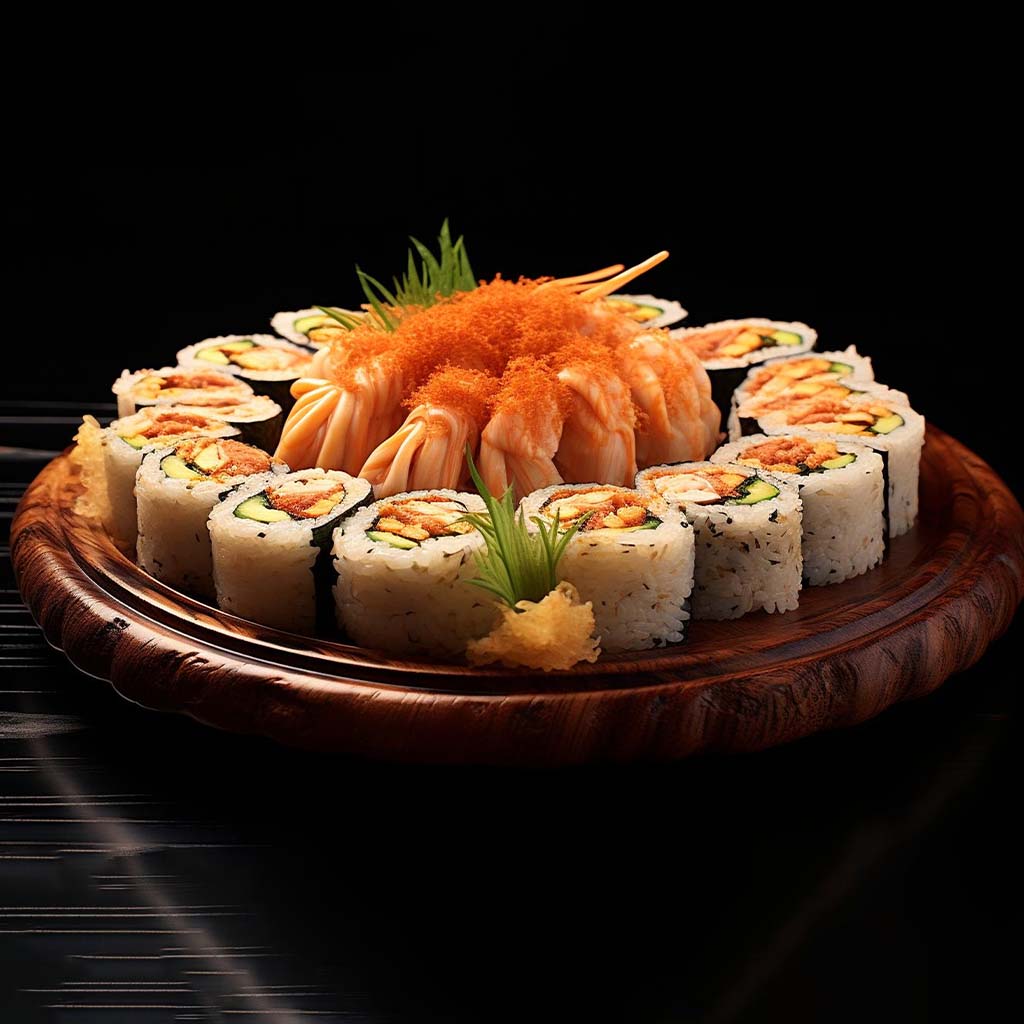1. Introduction to Sushi: A Culinary Journey Sushi, a quintessential Japanese dish, has captivated the taste buds of food enthusiasts worldwide. This delicacy, which combines vinegared rice with a variety of ingredients such as seafood, vegetables, and occasionally tropical fruits, offers a unique blend of flavors and textures. Sushi’s rich history and cultural significance make it more than just a meal; it is a culinary journey. Whether you are a novice or an experienced cook, mastering the art of sushi is an exciting and rewarding endeavor. In this guide, we will take you through the essentials of sushi making, from selecting the right ingredients to mastering various sushi techniques, ensuring you can create delicious sushi rolls at home.
2. Understanding the Basics of Sushi Rice Sushi rice, or “shari,” is the foundation of any good sushi. The key to perfect sushi rice lies in its preparation and seasoning. Begin by choosing short-grain Japanese rice, known for its stickiness and ability to hold together. Rinse the rice thoroughly under cold water to remove excess starch, which can make the rice too sticky. Once rinsed, cook the rice according to package instructions or use a rice cooker for consistent results. While the rice is still hot, transfer it to a wooden or plastic bowl and gently fold in a mixture of rice vinegar, sugar, and salt. This seasoning is crucial for achieving the distinct flavor of sushi rice. Allow the rice to cool to room temperature before using it in your sushi rolls.
3. Selecting the Freshest Ingredients The quality of ingredients used in sushi significantly impacts the final product. Freshness is paramount, especially when it comes to seafood. Visit a trusted fishmonger or Japanese grocery store to source sushi-grade fish such as tuna, salmon, and yellowtail. Vegetables like cucumber, avocado, and radish sprouts add a delightful crunch and color contrast to your sushi. Ensure all ingredients are washed, peeled, and cut into thin, even slices. Additionally, having high-quality nori (seaweed sheets), soy sauce, pickled ginger, and wasabi on hand will enhance the authenticity and flavor of your sushi.
4. Essential Sushi-Making Tools To create sushi at home, a few essential tools will make the process smoother and more enjoyable. A bamboo sushi mat (makisu) is indispensable for rolling sushi. Wrap the mat in plastic wrap to prevent rice from sticking and for easier cleanup. A sharp knife is crucial for cutting clean, even slices of fish and vegetables. Investing in a good-quality sushi knife can significantly improve your sushi-making experience. Additionally, small bowls for holding water and vinegar for your hands and knife, a rice paddle for mixing the rice, and a large wooden bowl for cooling the rice are useful tools to have on hand.
5. Nigiri Sushi: Simple Elegance Nigiri sushi, a classic form of sushi, consists of a small mound of sushi rice topped with a slice of fresh fish or seafood. To make nigiri, wet your hands with a mixture of water and rice vinegar to prevent the rice from sticking. Take a small amount of sushi rice and shape it into an oval mound using your fingers. Place a slice of fish over the rice, pressing gently to adhere. For added flavor, you can brush the fish with a light soy sauce or place a small dab of wasabi between the rice and fish. Nigiri sushi is best enjoyed fresh, showcasing the purity and simplicity of its ingredients.
6. Maki Sushi: Rolled Perfection Maki sushi, or sushi rolls, are perhaps the most recognized form of sushi. To make maki, place a sheet of nori on a bamboo mat, shiny side down. Spread an even layer of sushi rice over the nori, leaving a small border at the top edge. Arrange your chosen fillings, such as fish, vegetables, and avocado, in a line along the bottom third of the rice. Using the bamboo mat, roll the nori tightly around the fillings, pressing gently to shape the roll. Once rolled, use a sharp knife to cut the roll into bite-sized pieces. Serve with soy sauce, pickled ginger, and wasabi for a complete sushi experience.
7. Inside-Out Rolls: A Creative Twist Inside-out rolls, or uramaki, feature rice on the outside and nori on the inside, creating a visually appealing and delicious variation of traditional sushi rolls. To make inside-out rolls, cover a bamboo mat with plastic wrap and place a sheet of nori on top. Spread an even layer of sushi rice over the nori, then carefully flip the nori so the rice side is down. Arrange your fillings along the nori, then use the bamboo mat to roll the sushi tightly, with the rice on the outside. Sprinkle the roll with sesame seeds or tobiko (fish roe) for added texture and flavor before slicing and serving.
8. Temaki Sushi: Hand-Rolled Delights Temaki sushi, or hand rolls, are cone-shaped sushi that are fun to make and eat. To make temaki, cut a sheet of nori in half and hold it in your hand. Spread a thin layer of sushi rice over one half of the nori, leaving a border. Add your fillings diagonally across the rice. Fold the bottom corner of the nori over the fillings, then roll it into a cone shape, pressing gently to seal. Temaki sushi is typically eaten with your hands, making it a great option for casual gatherings or sushi parties.
9. Sashimi: Pure Simplicity Sashimi, thinly sliced raw fish or seafood, highlights the natural flavors and textures of the ingredients. To prepare sashimi, ensure you use the freshest, sushi-grade fish. With a sharp knife, slice the fish against the grain into thin, even pieces. Arrange the sashimi slices on a platter, often garnished with daikon radish, shiso leaves, and pickled ginger. Serve with soy sauce and wasabi on the side. Sashimi is a minimalist yet exquisite way to enjoy the purity of fresh seafood.
10. Sushi Bowls: A Deconstructed Delight Sushi bowls, or chirashi, are a convenient and delicious way to enjoy sushi without the need for rolling. To make a sushi bowl, start with a base of sushi rice in a bowl. Arrange various toppings such as slices of sashimi, avocado, cucumber, pickled vegetables, and seaweed salad over the rice. Drizzle with soy sauce and a sprinkle of sesame seeds. Sushi bowls are versatile and can be customized with your favorite sushi ingredients, offering a fresh and vibrant meal.
11. Vegetarian Sushi: Flavorful Alternatives Vegetarian sushi offers a variety of delicious options for those who prefer plant-based meals. Fill your sushi rolls with ingredients like cucumber, avocado, pickled radish, and asparagus. For added protein, include tofu, tempeh, or seasoned shiitake mushrooms. Vegetarian nigiri can be made using slices of vegetables like roasted bell pepper or eggplant. Experiment with different combinations of vegetables, fruits, and sauces to create unique and satisfying vegetarian sushi.
12. Sauces and Condiments: Enhancing Flavor The right sauces and condiments can elevate your sushi to new heights. Soy sauce is a staple, providing a salty, umami flavor. Wasabi, a spicy Japanese horseradish, adds a kick to each bite. Pickled ginger, or gari, is traditionally eaten between sushi pieces to cleanse the palate. Additionally, try drizzling your sushi with ponzu sauce, a citrusy soy-based sauce, or adding a touch of spicy mayo for a creamy, fiery flavor. Experiment with different condiments to find your perfect flavor combination.
13. Sushi Etiquette: Dining with Respect When enjoying sushi, following traditional Japanese etiquette enhances the dining experience. Sushi is typically eaten with chopsticks, but it is also acceptable to use your hands for nigiri and maki rolls. Dip the fish side of nigiri sushi into the soy sauce, rather than the rice, to prevent the rice from absorbing too much soy sauce and falling apart. Take small bites and savor each piece. Use pickled ginger to cleanse your palate between different types of sushi. Showing respect for the ingredients and the chef’s craftsmanship is an integral part of the sushi dining experience.
14. Pairing Sushi with Beverages The right beverage pairing can complement and enhance the flavors of your sushi. Traditional Japanese beverages like sake and green tea are popular choices. Sake, a rice wine, can be served hot or cold and varies in flavor from dry to sweet. Green tea provides a refreshing contrast to the rich flavors of sushi. For a more modern twist, consider pairing sushi with light, crisp white wines or sparkling wines. Beer, particularly Japanese lagers, is also a popular option. Experiment with different pairings to find what best suits your taste.
15. Health Benefits of Sushi Sushi offers numerous health benefits, making it a nutritious and wholesome meal choice. Fish, a primary ingredient in many sushi dishes, is rich in omega-3 fatty acids, which promote heart health and reduce inflammation. Seaweed, used in maki rolls, is a good source of vitamins and minerals, including iodine and calcium. Vegetables add fiber and essential nutrients, contributing to a balanced diet. However, it is important to be mindful of portion sizes and the frequency of consuming sushi with high mercury fish. Enjoying sushi as part of a varied diet can contribute to overall health and well-being.
16. Sushi Making as a Social Activity Making sushi can be a fun and interactive activity to share with family and friends. Hosting a sushi-making party allows everyone to get involved in preparing and rolling their own sushi. Provide a variety of ingredients and let guests customize their rolls according to their preferences. This hands-on experience not only makes for an enjoyable meal but also helps build appreciation for the art of sushi making. Sharing the process













